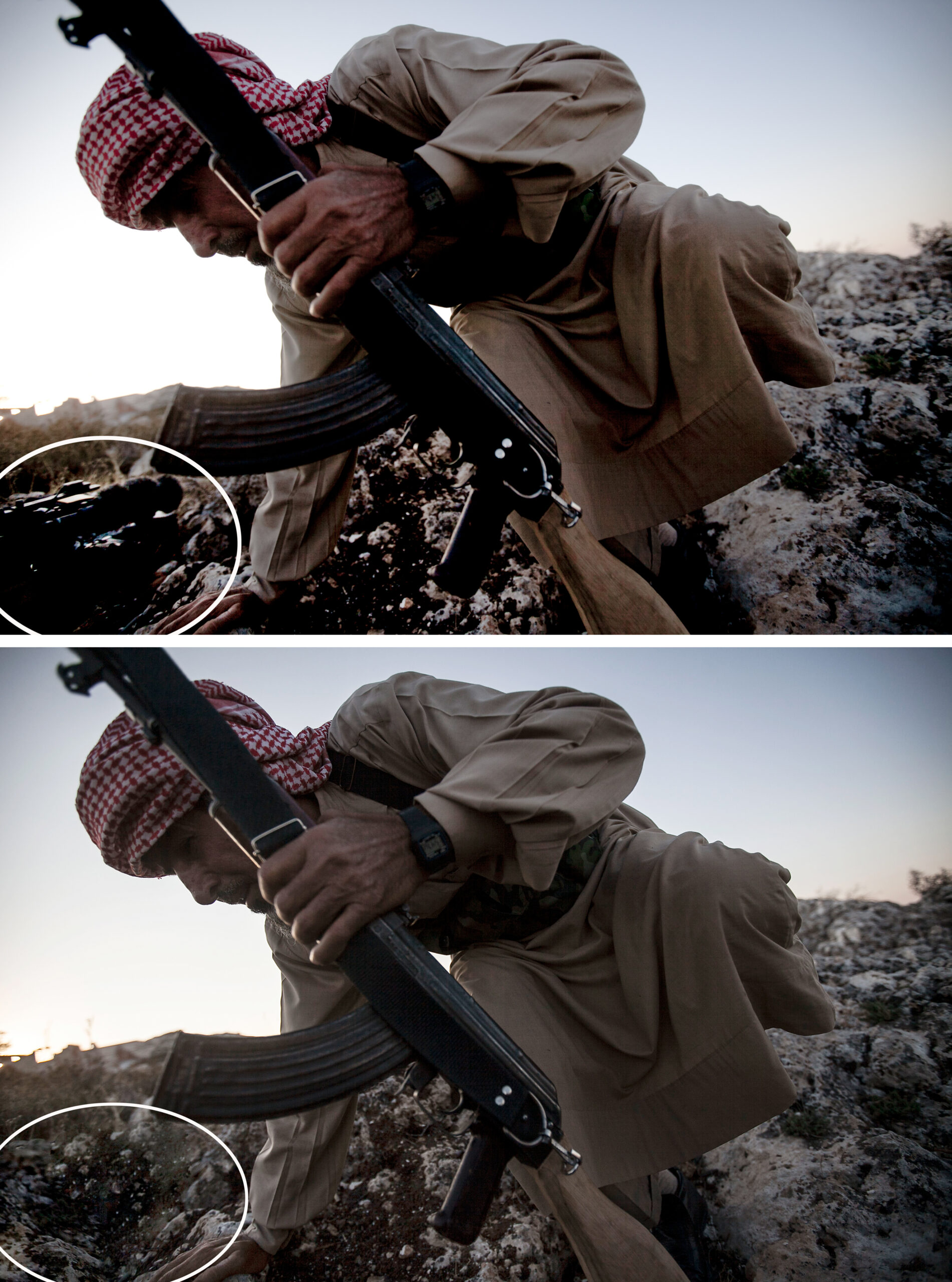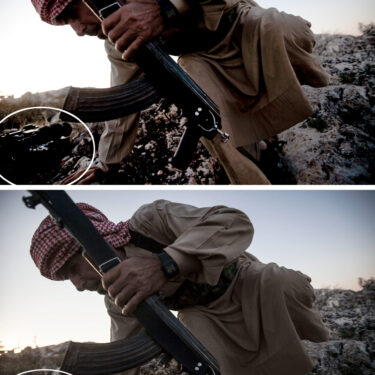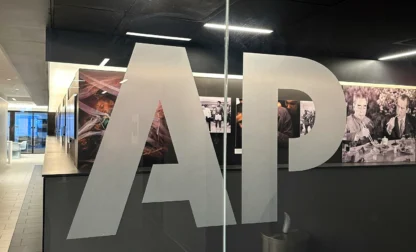NEW YORK (AP) — The Associated Press has severed ties with a freelance photographer who it says violated its ethical standards by altering a photo he took while covering the war in Syria in 2013.

The news service said Wednesday that Narciso Contreras recently told its editors that he manipulated a digital picture of a Syrian rebel fighter taken last September, using software to remove a colleague’s video camera from the lower left corner of the frame. That led AP to review all of the nearly 500 photos Contreras has filed since he began working for the news service in 2012. No other instances of alteration were uncovered, said Santiago Lyon, the news service’s vice president and director of photography.
Contreras was one of a team of photographers working for the AP who shared in a Pulitzer last year for images of the Syrian war. None of the images in that package were found to be compromised, according to the AP.
AP said it has severed its relationship with Contreras and will remove all of his images from its publicly available photo archive. The alteration breached AP’s requirements for truth and accuracy even though it involved a corner of the image with little news importance, Lyon said.
“AP’s reputation is paramount and we react decisively and vigorously when it is tarnished by actions in violation of our ethics code,” said Lyon. “Deliberately removing elements from our photographs is completely unacceptable.”
Contreras said Wednesday he thought that having the video camera in the frame might distract viewers, but he said it is a decision he now regrets.
“I took the wrong decision when I removed the camera … I feel ashamed about that,” he said. “You can go through my archives and you can find that this is a single case that happened probably at one very stressed moment, at one very difficult situation, but yeah, it happened to me, so I have to assume the consequences.”
Contreras, a Mexican citizen who has also freelanced for other U.S. news organizations, took the image in question during a trip to Syria last fall with a video journalist also freelancing for the news service. On Sept. 29, the two men captured images of rebel fighters during an exchange of fire with government forces in the village of Telata.
In the image of a fighter ducking for cover, his fellow journalist’s video camera was initially visible on the ground at one corner of the frame. But Contreras told his editors recently that he had altered the image by “cloning” other pieces of the background and pasting them over the camera, before sending that image to the AP photo desk.
That revelation led editors to examine all of the 494 photos by Contreras that AP has transmitted during his tenure and, when possible, to compare them to the original data file held by the photographer.
Contreras was one of five AP journalists who shared in the Pulitzer awarded last April for breaking news photography, cited by judges for “producing memorable images under extreme hazard” and saluted by Lyon for their bravery and skill.
On Wednesday, he said while the AP and other news organizations approve photographers’ use of software to lighten or darken photos to replicate scenes as they actually witnessed them, the news service could not countenance Contreras’ manipulation of a scene that was not true to reality.
“It’s very important for the AP to be completely transparent about things of this nature,” he said.



